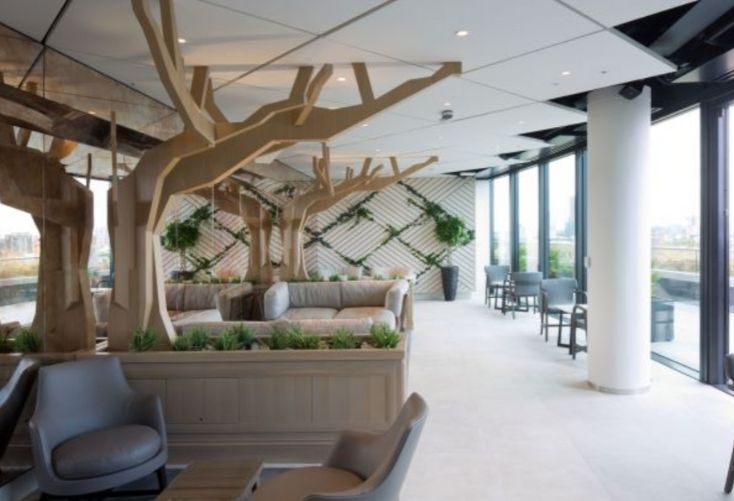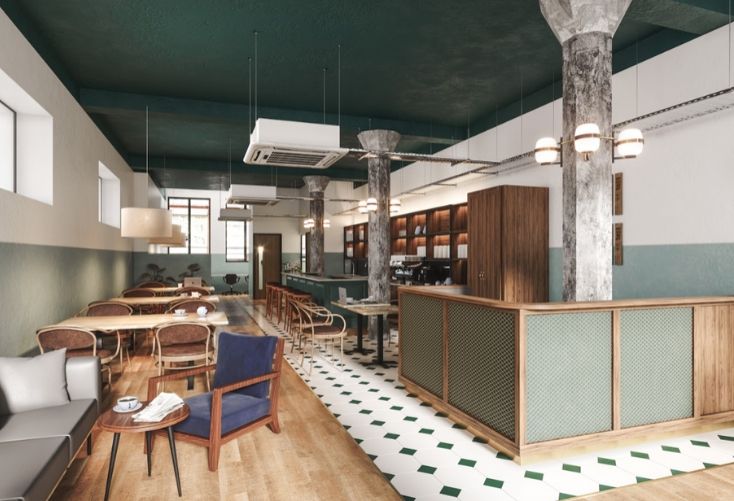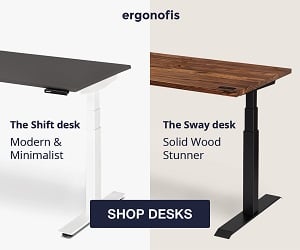- Allwork.Space spoke with Beth Harrison from Sketch, an independent furniture consultant, to learn which workplace design trends we can expect to see in 2020.
- ‘One style fits all’ is out – the market has “grown-up” and no longer wants Google-esque workplace design.
- Companies now want to infuse their workplace with their own culture, along with elements of comfort, homeliness, sustainability, and wellness.
The workplace has been rapidly evolving and changing over the past few years. As 2019 comes to a close, companies should think about how their spaces have changed over the last decade and what changes lie ahead in the new year.
Technological advances, economic changes, the war for talent, and globalization — to mention a few — have had a significant impact on the way people work, which naturally has affected the places people work from. As the world of work continues to evolve, so will the spaces designed to inspire people and productivity.
We’ve already experienced some changes in this sense, like the increased adoption of flexible workspace and flexible working policies, the transition towards a digital workplace, the creation of spaces that positively contribute to our health and environment, the creation of workplaces that support collaboration online and offline, the implementation of workplaces that convey a company’s culture, and the increased focus on hospitality in the workplace (including unique amenities).
To better understand how the workplace has already changed and how it will further change in the future, Allwork.Space spoke with Beth Harrison, Sales Director at Sketch.
Allwork.Space: Let’s start with 2019. What are some key ways you observed the workplace changed and evolved this year?
Beth Harrison: I’d have to say there’s been a greater priority on comfort. When you look at the amenities companies now offer, perks, and other workplace design elements (plants, sofas, lounges), there is a much more homely feel to the workplace that is all related to attracting people to the office — this is in part driven by the fact that everyone accepts the notion of flexible working and the freedom to work from home. Yet, companies still want people to come into the office, hence the need to make work feel like home, like a safe haven.

We also cannot talk about workplace change without mentioning technology. There’s a big rise in using technology (which will continue in years to come), especially things like sensors to obtain and use data to feed workplace change.
It is now very important to understand the behaviors of the people using the workplace — and technology can help provide the necessary data and insights so that companies can create environments that respond to what the end user wants. That all needs balancing against efficiency too – so sensors really help gather that understanding.
Allwork.Space: How have these changes affected workplace design?
Comfort has changed the overall aesthetic of the workplace. Beyond that, we’ve found that companies want to reflect their individual culture by site, or by country, by teams and sometimes even departments. Translating that culture into workplace design and supporting business change, including their brand, has become more common.

(It’s important to note here that workplace design can help companies attract and retain top talent, but research also has found that branded workspaces can better engage the workforce.)
Again, technology and sensors help understand and manage these changes and the solutions needed, giving businesses the assurance that the change they’re adopting will be positive, planned, and beneficial.
Allwork.Space: As 2019 comes to a close, what are some key workplace elements that will go out of style next year?
One size fits all and one style fits all – the market has grown up from wanting a Facebook or Google style workplace to wanting their own culture defined in their workplace.
Thankfully we have said goodbye to businesses wanting a colour scheme based on their primary branding colours – businesses realise employees need a break from the corporate message sometimes.
Allwork.Space: What are some workplace design trends you’re expecting to pick up in 2020?
1. Wellbeing and the prioritization of people and their needs. There’s already been huge advances in this area as companies seek to create the ultimate workplace experience, but the movement towards wellbeing and human-centric workplaces will continue for years to come as providing workplaces that cater to peoples’ needs will help companies in their efforts to attract and retain the best talent.
2. I believe we will see increased instances of companies providing free food and personal services such as lockers for personal delivery pick up points. Again, in an effort to create unique workplace experiences, amenities such as this can go a long way in sending the message that a company cares about its people.

3. Green is the new black. Greenery and planting for interior and exterior space and landlords prioritising green areas in their portfolio to attract the most savvy and forward-thinking businesses.
Suggested Reading: “The 7 Best Low-Maintenance Plants for the Workplace”
Allwork.Space: You’ve mentioned that technology plays a key role in workplace change. Can you tell us more about how technology will continue to influence workplace design?
I think it will play an increasingly important role as most work settings have an expectation for interaction both online and offline. Technology can not only help companies understand how people use the workplace and in which ways it should change or evolve, but it can also play a key role in encouraging collaboration across distributed teams.
Allwork.Space: Speaking about technology, what about the digital workplace? How does it play into workplace design?
Wherever there is an interaction between elements that involves people, design is crucial. People do not always act as predicted and spaces need to be intuitive, simple, and effective regardless of the complexity of the technology that may be utilized.



 Dr. Gleb Tsipursky – The Office Whisperer
Dr. Gleb Tsipursky – The Office Whisperer Nirit Cohen – WorkFutures
Nirit Cohen – WorkFutures Angela Howard – Culture Expert
Angela Howard – Culture Expert Drew Jones – Design & Innovation
Drew Jones – Design & Innovation Jonathan Price – CRE & Flex Expert
Jonathan Price – CRE & Flex Expert













